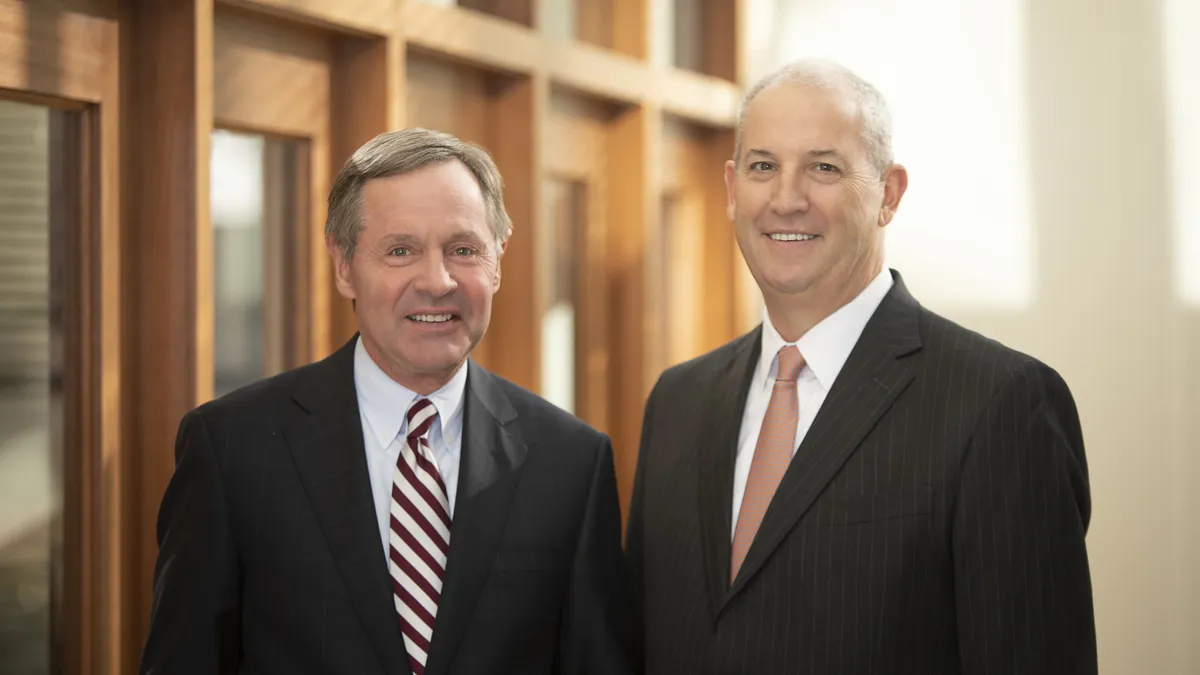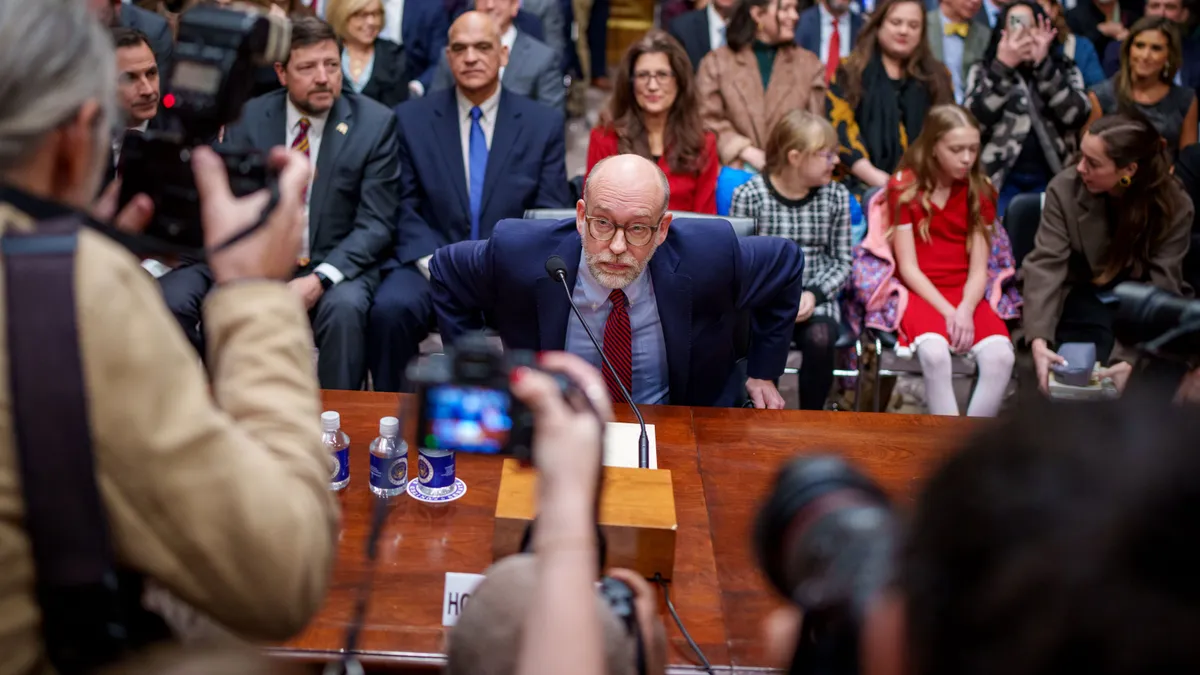Cadence Bank is giving added responsibilities to a handful of its executives as part of an organizational adjustment the Tupelo, Mississippi-based lender said would eliminate layers of management and quicken decision-making.
Cadence’s president, Chris Bagley, will become the bank’s chief credit officer, in addition to maintaining his previous role. Cadence cited Bagley’s “extensive background in credit” in its announcement. Bagley had served as chief credit officer at Houston-based Prosperity Bank for 17 years before joining BancorpSouth in 2014, according to his LinkedIn profile. BancorpSouth acquired Cadence in 2021 but kept the Cadence name.
Cadence CFO Valerie Toalson will add president of banking services to her title and oversee the bank’s mortgage and wealth management businesses — including asset management and trust, Linscomb Wealth and Cadence’s investment services unit, the bank said in its announcement last week.
Toalson succeeds Mike Meyer as president of banking services. Meyer retired in December. Along with the change in responsibilities, Cadence’s financial institutions group will align itself with the bank’s corporate treasury.
Bagley’s predecessor as chief credit officer, Billy Braddock, will become Cadence’s chief banking officer — taking over for Hank Holmes, who is leaving the company to “pursue outside opportunities” in entrepreneurship, startup ventures and organization building, the bank said. Holmes will stay on through June 30 as a special adviser to Braddock, who is tasked with further developing Cadence’s corporate bank, as well as overseeing its treasury management and private-banking units, the bank said.
Holmes isn’t the only Cadence executive who’s leaving. Sheila Ray, Cadence’s chief talent officer, will retire from the company June 30, the bank said. Ray had joined Cadence in 2019, according to her LinkedIn profile.
Jerrell Moore, Cadence’s chief diversity officer, will add human resources to his oversight May 1, effectively picking up Ray’s duties. Moore will join Cadence’s management committee June 30, the bank said.
Cathy Freeman, Cadence’s chief administrative officer, will oversee the company’s experience office, in addition to her previous role, which puts her in charge of the bank’s corporate communications, corporate facilities, internal audit and marketing divisions.
“This organizational realignment afforded us the opportunity to simplify our operating model and further the development of some of our most senior leaders,” Cadence CEO Dan Rollins said in a statement last week. “The additional responsibilities will not only empower these leaders, it will provide a foundation for driving growth and efficiencies while strengthening our focus on putting customers at the center of our business.”
Cadence has failed to meet some of the benchmarks it had laid out for itself in the aftermath of the BancorpSouth merger. Its adjusted efficiency ratio, for example, stood at 66% in the fourth quarter — well above the 54.4% it expected by 2022, according to American Banker.
Some of Cadence’s more recent efforts to slim down include an October deal that offloaded its insurance unit to Arthur J. Gallagher. The bank also closed 35 branches last year and trimmed headcount by 500 employees through voluntary retirement buyouts, American Banker reported.
Cadence would hardly be the first bank in recent memory to weed out layers of management. Citi launched a reorganization in September that trimmed its management hierarchy from 13 layers to eight.
Cadence also has consolidated its board from 15 members to 12 since the BancorpSouth merger, the bank said in its release last week. That takes a page from another reorganizing bank — Truist — which shrunk its board by eight members last fall.














